Remembrance: Individual and Unique Objects
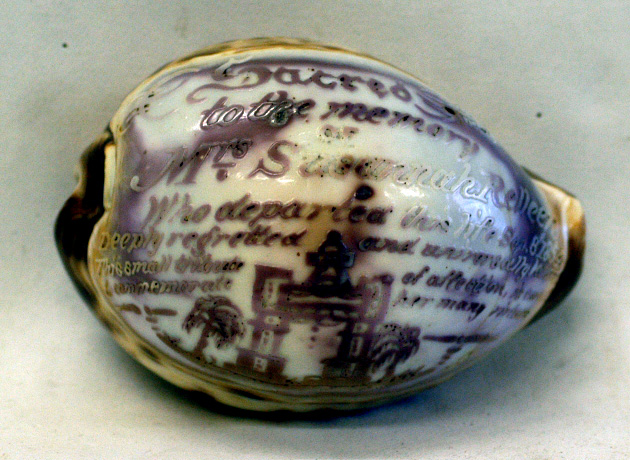
Our exhibition Remembrance will open at Abbey House Museum on Saturday 3 March. The exhibition includes objects which have been used to remember loved ones since the Victorian period and up to the present day. Some of these were mass produced, or reflect widespread mourning rituals and practices. But people have also created or kept individual and unique objects to remember loved ones. The exhibition features some very unusual objects which were created to mark a death. And sometimes everyday objects take on a new meaning because of the memories attached to them. In the museum collections we have objects that were kept for a long time before being donated to us because of their association with somebody that the donor was close to, who had passed away. These items were not made for mourning, but they took on added significance after the death of their original owner.
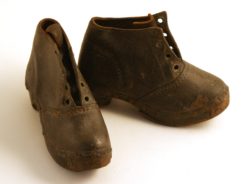
Children’s clogs, 1903. Donated by Miss H. Dawson.
This everyday pair of children’s clogs were sent by relatives to a father whose wife had just had a baby boy. Sadly, the baby passed away before the clogs arrived and the mother died shortly afterwards. The father hung the clogs up on the back of his bedroom door by their laces, which were originally red.
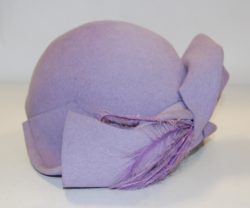
Cloche hat belonging to Rosetta Rowley, c. 1952. Donated by Mrs Eileen Pugh.
The lilac felt cloche hat with bow and feather trim was worn by Rosetta Rowley (1929 - 1953) when she was in her early twenties. During the day Rosetta worked in a factory making costume jewellery and in the evening she worked as a cinema usherette. In 1952, when she was 23 years old, she married Michael Noble. She died just one year later, after having been admitted to hospital with pneumonia when four months pregnant. Mrs Rowley kept her daughter's beautiful clothes, intending her younger daughter Eileen Pugh to wear them when old enough. But Eileen never fit them and following her mother's death in 1977 donated them to the museum. Five years after Rosetta’s death Michael remarried and joined the rest of his family in Australia.
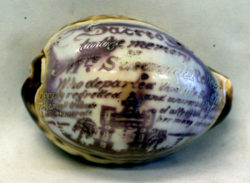
Large polished shell, 1854.
This polished shell bears the inscription: ‘Sacred to the memory of Mrs Susannah Releen who departed this life Sept. 8th 1854. Deeply regretted and universally lamented. This small tribute of affection is carved to commemorate her many virtues’.
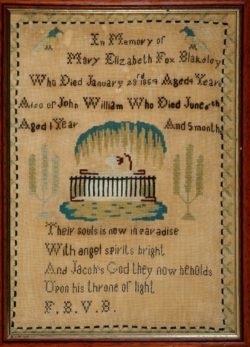
Framed cross stitch sampler, made by Fanny Blakeley Victoria Burnley, 1854.
In the mid-nineteenth century, embroidery was thought to be an important skill for women and girls. It was a pastime, a housekeeping ritual, and it was thought to demonstrate virtue. The cross stitch samplers that were produced often had a religious or educational tone, and they were used to record births and commemorate deaths. This sampler is poignantly dedicated, ‘In memory of Mary Elizabeth Fox Blakely who died January 23rd 1854 aged 4 years. Also of John William who died June 6th aged 1 year and 5 months’. It is initialled F.B.V.B. which stands for Fanny Blakeley Victoria Burnley (1839-1904), aunt to the two deceased children.
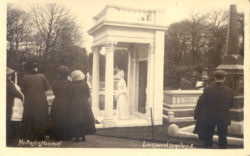
Postcard of the Preston Monument, Lawnswood Cemetery, c 1911.
Ethel Preston (née West) died in 1911 at the age of 50. She was married to Walter Preston, a manufacturing chemist and President of the Leeds Amateur and District Bowling Association. As a tribute to her Walter erected an elaborate monument in Lawnswood Cemetery. It is said that Ethel is standing waiting at the open door to be reunited with her husband, and that the door would finally be closed when he joined her. However, only a year after Ethel’s death Walter married his 22 year old house keeper, Emily Florence Richardson.
Use the comments form below to let us know what you would include in the exhibition.
Images © Leeds Museums and Galleries.
